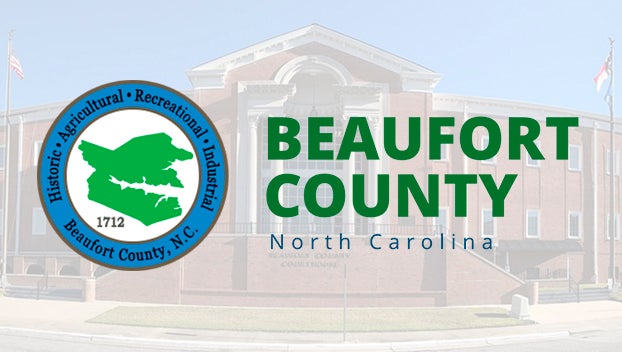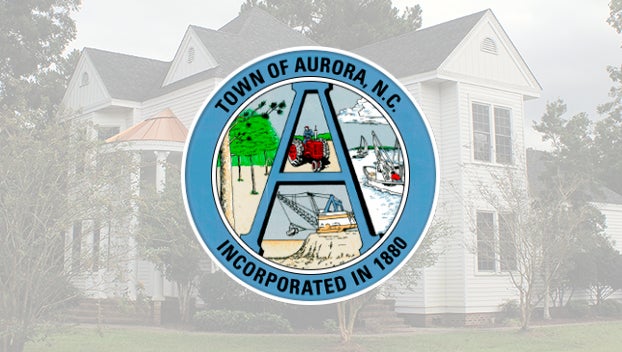Unpredictable hurricanes make for greater need to be prepared
Published 4:02 pm Wednesday, July 3, 2019
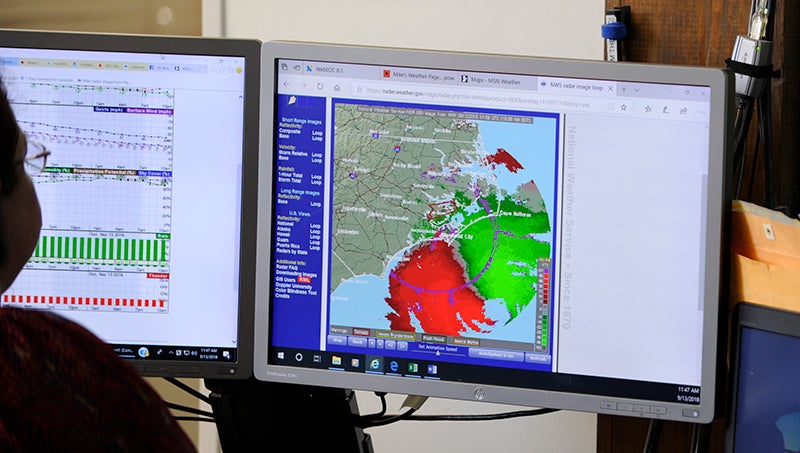
- NO TWO THE SAME: A Beaufort County Emergency Services technician watches in real-time as Hurricane Florence bears down on eastern North Carolina in September 2018. Emergency services officials stress the importance that no one can assume past hurricane experience will apply to any given storm — they’re all different and can have potentially devastating impacts. (Ashley Vansant/Daily News)
Bertha, Fran, Dennis, Floyd, Irene, Matthew, Florence. Anyone who knows Beaufort County, knows these names — they barreled in from the Atlantic and, in their wake, left devastation. The damage has varied storm to storm, but each one has left a lasting impact on many.
This hurricane season, forecasters have predicted 14 named storms. Six of those will be hurricanes; two of those, major hurricanes, is the general consensus. Predicting anything beyond the number of hurricanes expected — where it will hit, at what intensity, how fast it will be moving — is impossible, as the above-named storms have illustrated.
And that’s what Beaufort County Emergency Services officials want people to remember.
Memories of Florence remain fresh for many Beaufort County homeowners. Recovery efforts are still going on 10 months after Florence’s landfall as a Category 1 storm, and it’s already one month into the next hurricane season. No one was expecting the many evacuations from rising floodwaters, not when it was such a diminished storm.
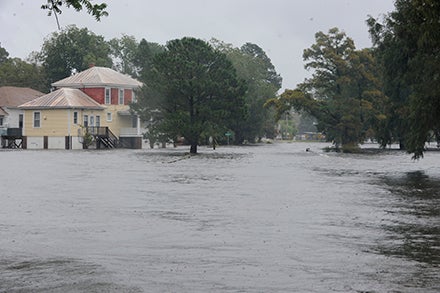
HIGH WATER: Though Hurricane Florence’s category was downgraded from a strong 4 to a 1 before landfall, what didn’t change was the anticipated storm surge. Florence brought more flooding to some areas than had been seen since Hurricane Hazel in 1954. Here, the river extends into the basements of West Main Street homes in Washington.
Therein lies the issue, according to Chris Newkirk, Beaufort County’s chief of fire and emergency management: relying on the Saffir-Simpson Hurricane Wind Scale to predict the impacts is a mistake.
“A big issue, and it’s pretty prevalent, is we relate to our past experiences based on our category of storm. I’ve had this same conversation with the National Weather Center and National Hurricane Center: we are victims of our own success when it comes that scale,” Newkirk said, adding that as Florence downgraded from a Category 5 storm to a Category 1, eastern North Carolinians were lulled into a false sense of security.
“The higher the number, the more seriously our public took it. When it downgraded to a 3, then eventually to a 1 just before landfall, they’re equating that 1 to a 1 in the 1990s — not much wind, little rain. But a Category 1 is not always a Category 1. If you look at all the threats from Florence as a Category 5, you’re looking at 8 to 10 feet storm surge, 14 inches of rain. The only variable was the wind,” Newkirk said. “People thought, ‘I’ve stayed in my home in a Category 2 before, I’m going to be OK’ — so that was a false sense of security based on our past. You’ll hear a lot of talk about climate change or global warming, whatever you want to call it, whatever you believe, but the simple truth is: every storm is different.”
Newkirk said his experience in his two years with Beaufort County Emergency Services has shown him two major issues where Beaufort County residents can improve when it comes to hurricane preparedness.
“I think that the No. 1 issue we see is people wait too late to make plans,” Newkirk said.
Because there’s no way to tell where a storm may land days in advance, many put off what they can do to prepare until there’s guarantee of landfall.
“People think, ‘I don’t want to take any actions that aren’t necessary, so I am just going to wait to be sure.’ They’re not predictable,” Newkirk said. “You don’t have time to make the preparations you need, particularly for a number of our residents in Beaufort County — they have a secondary home at Swan Point, maybe they live in Raleigh, and now they have a storm threatening both residences. That we procrastinate is probably the biggest challenge we face.”
Another issue is the amount of supplies recommended by state and federal agencies versus what residents actually should have.
“We are a resilient community. I love that about Beaufort County: we adapt and we overcome. We do the best we can with what we’ve got, but the bigger picture is that they say, ‘Be self-sustained for three days.’ That time frame, in reality, is not long enough. We need to be prepared for five to seven days. That’s supplies getting back into the area, impacts that linger for days; communities aren’t accessible for three days. Days later, you’re still surrounded by water. If I have an extra bottle of water — great. I’d rather have it and not need it, than need it and not have it,” Newkirk laughed.
Storms such as Irene and Florence, both category 1 storms that lingered for much longer than expected, are prime examples of hurricanes’ unpredictability. This is why eastern North Carolinians should have more than one plan in place, according to Newkirk.
“I think we need some depth in our plans. People may plan to be self-sustained in their home, but if a storm changes, and they have to be evacuated, how adaptable are they to that change?” Newkirk asked. “What if a Category 2 hits the Gulf Stream and grows 12 hours before landfall? They now have a 12-hour window, is the plan still good?”
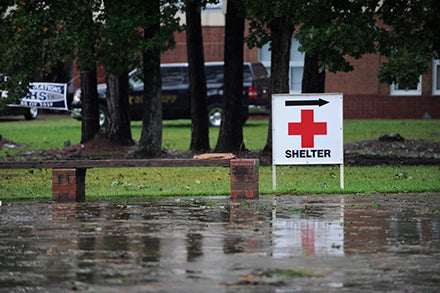
WORD OF WARNING: Emergency services officials warn residents not to be complacent — even if a home has never flooded, nor seems to be in danger of flooding, have a backup plan in place before the storm arrives.
Newkirk recommended a plan A, B and C, and encouraged people to consider not only the worst-case scenario, but also go ahead and make that phone call to friends or family on higher land to ask if shelter would be available.
“It’s a simple phone call. Have that conversation in advance,” Newkirk said.
While Beaufort County residents can improve, as proven by Florence, on hurricane preparedness, Newkirk said there’s one area where locals are top notch.
“I think we are a really resilient county. I think our communities work well together; our county and municipal departments work really well together. You hear people use the term ‘good neighbors’ a lot, and sometimes you hear people talk about being good neighbors, but they don’t act like it, but here in Beaufort County, we really do have good neighbors and that’s nice to see. After Florence, in the Pamlico Beach and Sidney area, in a very rural area of Beaufort County that had some pretty significant impacts, the way that community came together to feed each other, to clean out each other’s homes out, to check on elderly people, they really come together,” Newkirk said. “I’m proud of this county, and the way it has responded to events that occur. … just the way Beaufort County and its communities pull together and support each other — I’m proud of that.”


